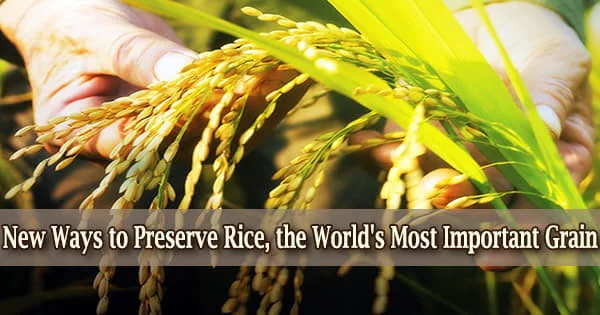Like people, plants have their own ways of coping with stress. Scientists are developing plans for how plants can reduce their own stress in order to protect one of the most vital crops on Earth from harsh climatic changes.
Researchers from UC Riverside have discovered what happens to rice plant roots under two different stressful conditions: excess or insufficient water. New preventative measures are based on these observations.
“This one crop is the major source of calories for upwards of 45 percent of humanity, but its harvests are in danger,” said Julia Bailey-Serres, UCR geneticist and study lead. “In the U.S., floods rival droughts in terms of damage to farmers’ crops each year.”
While rice can grow well in flooded soils, the plants will produce less food or possibly perish if the water is too deep for an extended period of time. This project replicated extended flooding that lasted five days or longer and totally submerged vegetation. Additionally, it mimicked drought conditions.
Because roots are the invisible initial responders to flood and drought-related stress, the researchers focused in particular on how they responded to both types of circumstances. A recent article in the journal Developmental Cell details their work.
One important discovery relates to suberin, a cork-like material produced by stressed rice roots. Both drought and floods are protected from by it.
“Suberin is a lipid molecule that helps any water drawn up by the roots make it to the shoots, and helps oxygen from shoots to reach roots,” Bailey-Serres said. “If we reinforce the plant’s ability to create suberin, rice has better chances for survival in all kinds of weather.”
The network of genes that regulate suberin production was discovered by the researchers, and they can now use this knowledge for selective breeding or gene editing.
Understanding suberin is particularly exciting because it is not susceptible to breakdown by soil microbes, so carbon that the plant puts into suberin molecules in the roots is trapped in the ground. This means that increasing suberin could help combat climate change by removing and storing carbon from the atmosphere.
Alex Borowsky
“Understanding suberin is particularly exciting because it is not susceptible to breakdown by soil microbes, so carbon that the plant puts into suberin molecules in the roots is trapped in the ground,” said Alex Borowsky, UCR computational biologist and study co-author.
“This means that increasing suberin could help combat climate change by removing and storing carbon from the atmosphere.”
The researchers also identified the genes controlling some of rice’s other stress behaviors.
“One of our interesting findings is that when rice plants are submerged in water, the root cell growth cycle goes on pause, then switches back on shortly after the shoots have access to air,” Bailey-Serres said.
The study team intends to investigate whether altering these stress reactions can increase the plant’s resistance to both wet and dry circumstances in the future.
“Now that we understand these responses, we have a roadmap to make targeted changes to the rice genome that will result in a more stress-tolerant plant,” Bailey-Serres said.
Despite the fact that dangers from both droughts and severe rains are growing, Bailey-Serres is optimistic that new genetic technologies can boost its resistance before it’s too late.
“With genome editing, the fact that we can make a tiny but targeted change and protect a plant from disease is amazing. Though our crops are threatened, new technologies give us reasons to hope,” Bailey-Serres said.
















